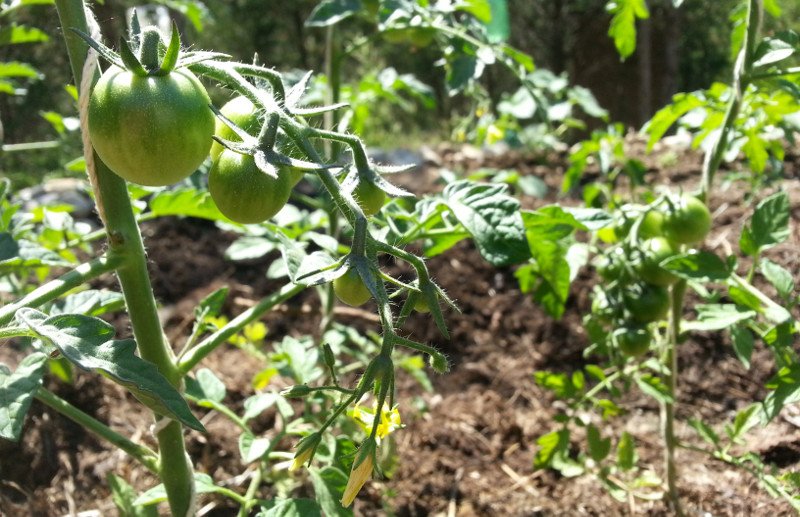The cabin terrace garden is growing hot peppers, cucumber plants, wild strawberry seedlings, cherry tomato vines, and kitchen herbs. The terrace was built seven weeks ago - Building the Garden Terrace and Lower Rock Retention Wall.
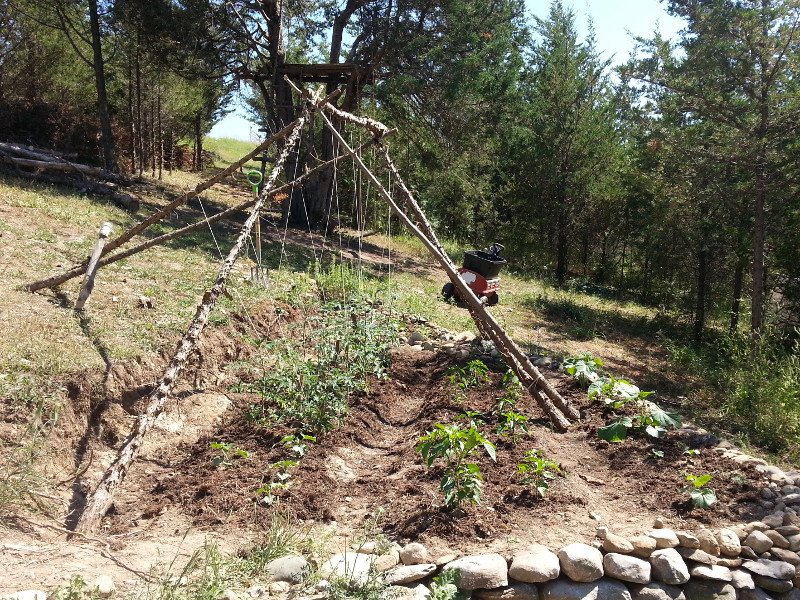
Twenty-five Days Ago...
Twenty-five days ago the seedlings were transplanted into the garden. I also added Garden Hose Drip Irrigation with Gravity and a .79mm Drill Bit to help keep the garden watered. There has been little rainfall for many weeks - the gravity fed drip irrigation system has saved a lot of time and energy.
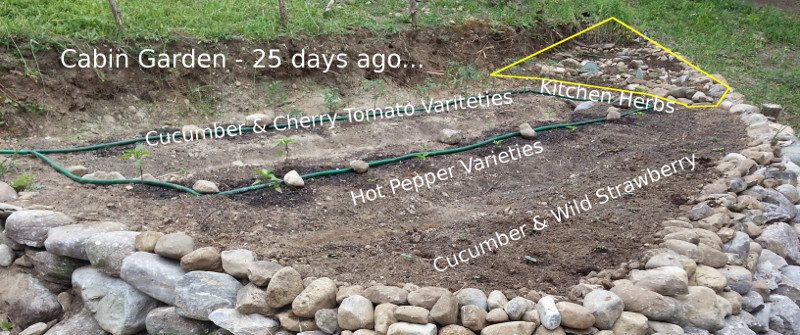
The Garden Now...
The garden has grown a lot the past twenty-five days. A week ago I added a trellis. The cherry tomato vines were strung up to the trellis after the branches were removed. A previous post - Stringing the Cherry Tomato Varieties up to the Trellis - shows how this is done.
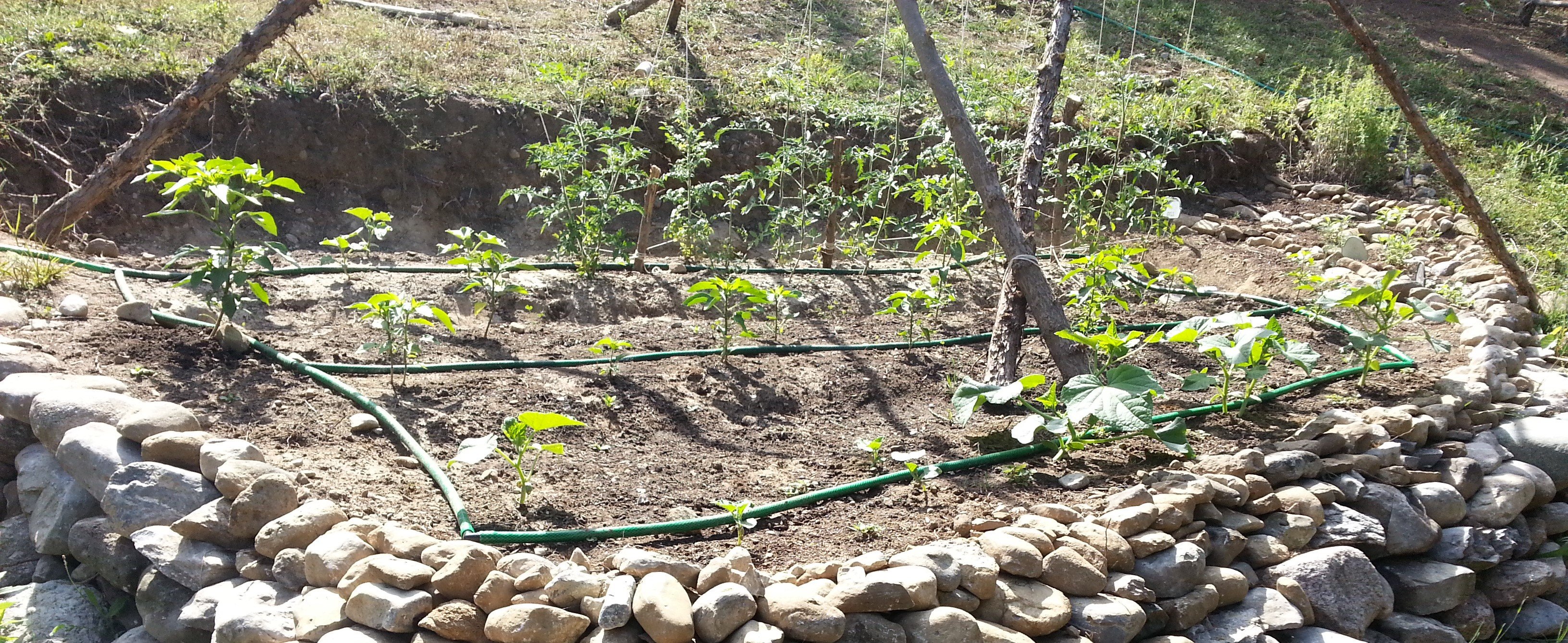
As you can see in the picture above, the clay and rock garden soil needed help.
The Composting Bin
In the early spring - when the material in the compost bin had thawed enough from winter to be turned - I heaped the compost along the gate-side corner to compost more thoroughly with potential hot composting action. In this previous post - Back Acres: Heaping the Compost in the Cubic Meter Bin for Hot Composting - I discuss the construction and hot composting potential of my cubic meter composting bin.
In the picture below you can see the chicken wire gate of the composting bin has been pulled up.
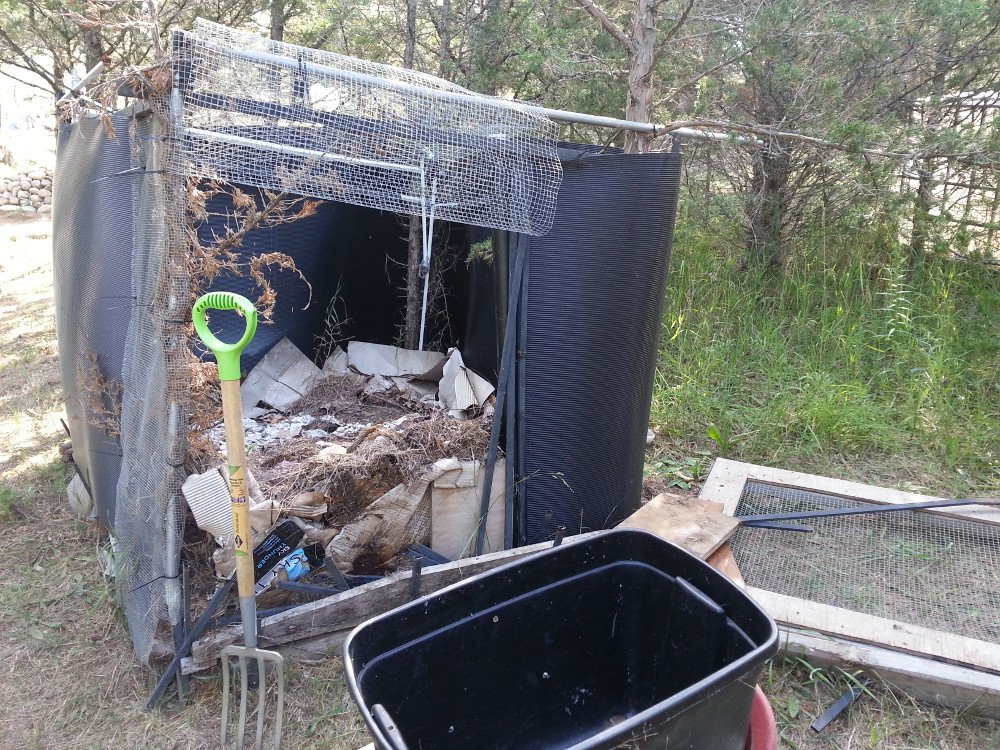
In the first picture below you can see the gate side of the composting bin where the compost had been heaped earlier in the spring. It has shrunk considerably in size. On the far side of the compost bin is where kitchen scraps, cardboard, and lawn clippings are added to the bin. In a few days I will add more lawn clippings to the bin and re-heap the pile onto the gate side, and give it a good watering.

|
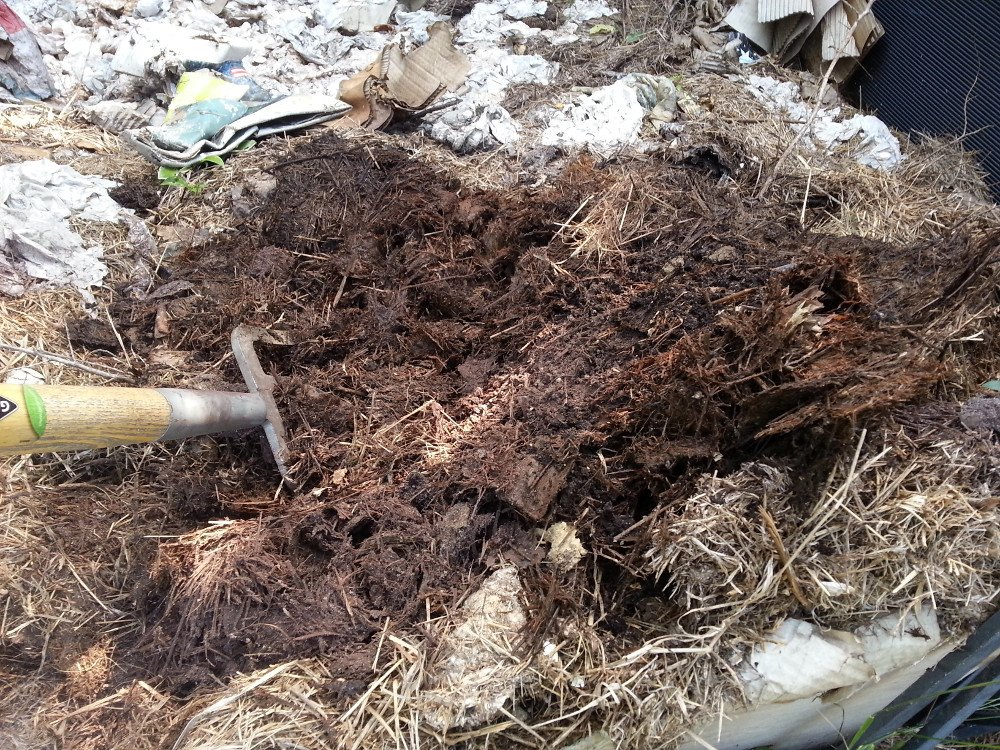
|
Removed Items that do not Compost
As I was spade forking my way through the compost, I would hear the odd crinkle of plastic packing tape or other items that do not compost. Some would get caught on the spading fork, some would catch my eye. I was sure to remove any items that do not compost during this whole process. You can see the pile of removed items below.
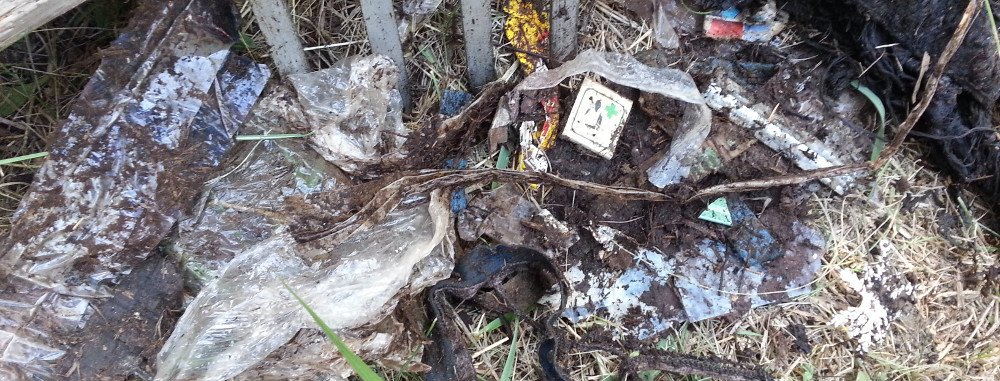
Wagon Loads of Compost
You can see the storage tote full of the aged compost - ready in the wagon for transport. Two of these wagon loads will give the garden beds a modest covering.
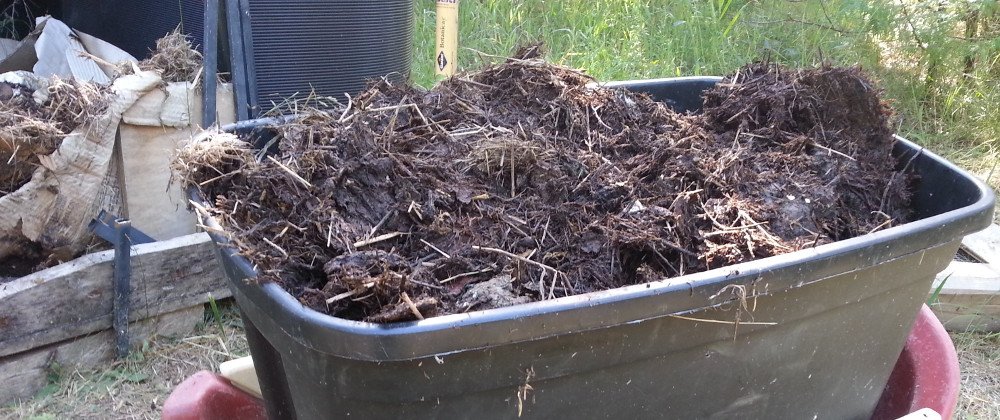
Red Worms Found in the Compost Bin
| I was happy to find red worms in the compost bin. Red worms are the type of worms that will help quickly break down compost into top quality soil for the garden. |

|
Compost Added to the Garden
In the picture below you can see how the compost was added to the garden beds. The compost will help with suppressing weeds and preventing moisture loss. The mature compost will also attract worms to the garden, provide some nutrients to the plants, and will improve the clay and rock soil when mixed in at the start of each season.

The Growing Garden
In the first picture below you can see one of the Cayenne Chili Pepper plants - two peppers and lots of blooms. The Cucumber plants will be spreading out with their vines soon enough. I considered having them climb a rope to the trellis, but i didn't want to shade the hot pepper plants, so I will have the cucumbers cascade down the terrace wall.

|

|
The cherry tomato varieties are growing just as well up here as they are down in the main tomato production garden. The day I went to the cabin terrace garden to string up the tomato plants, one of them in the picture below was laying on the ground from the weight of the tomatoes - Sakura variety of course.
